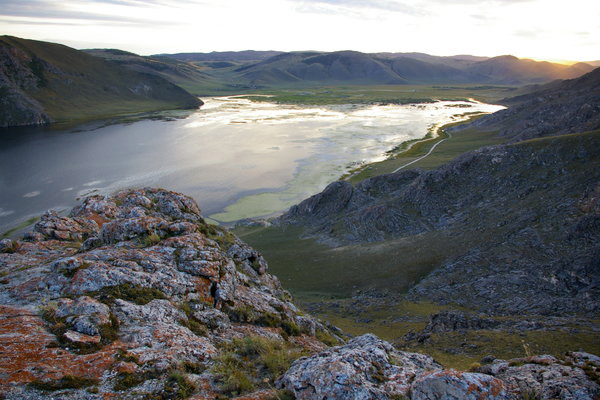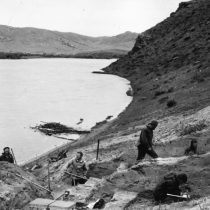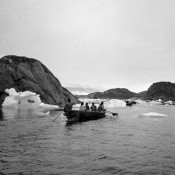The genome of a young boy buried at Mal’ta near Lake Baikal in eastern Siberia some 24,000 years ago has turned out to hold two surprises for anthropologists as a series of tests of his DNA showed that it matches that of Western Europeans, but also (in a percentage of 25%) that of Native Americans.
The Mal’ta boy was 3 to 4 years old and was buried under a stone slab wearing an ivory diadem, a bead necklace and a bird-shaped pendant. Elsewhere at the same site about 30 Venus figurines were found of the kind produced by the Upper Paleolithic cultures of Europe. The remains were excavated by Russian archaeologists over a 20-year period ending in 1958 and stored in museums in St. Petersburg.
There they lay for some 50 years until they were examined by a team led by Eske Willerslev of the University of Copenhagen. The team extracted DNA from bone taken from the child’s upper arm. The verdict?
At first, his genes suggest the boy would have had brown hair, brown eyes and freckled skin. His mitochondrial DNA belonged to the lineage known as U, which is commonly found among the modern humans who first entered Europe about 44,000 years ago. His U-lineage was later confirmed by an examination of his nuclear genome, which contains the major part of human inheritance, while it was found consistent with genome from another individual from Siberia, an adult who died 17,000 years ago. Together, the two genomes indicate that descendants of the modern humans who entered Europe had spread much farther east across Eurasia than had previously been assumed and occupied Siberia during an extremely cold period starting 20,000 years ago that is known as the Last Glacial Maximum.
Secondly, however, the Mal’ta boy’s genome matches a large proportion — about 25 percent — of the DNA of living Native Americans. The first people to arrive in the Americas have long been assumed to have descended from Siberian populations related to East Asians. It now seems that they may be a mixture between the Western Europeans who had reached Siberia and an East Asian population. Still, there was no match to East Asian origins as scientists would expect. Dr. Willerslev’s interpretation was that the ancestors of Native Americans had already separated from the East Asian population when they interbred with the people of the Mal’ta culture, and that this admixed population then crossed over the Beringian land bridge that then lay between Siberia and Alaska to become a founding population of Native Americans.
A European contribution to Native American ancestry could explain two longstanding puzzles about the people’s origins. One is that many ancient Native American skulls, including that of the well-known Kennewick man, look very different from those of the present day population. Another is that one of the five mitochondrial DNA lineages found in Native Americans, the lineage known as X, also occurs in Europeans. One explanation is that Europeans managed to cross the Atlantic in small boats some 20,000 years ago and joined the Native Americans from Siberia, while Dr. Willerslev offers a second one saying that European bearers of the X lineage had migrated across Siberia with the ancestors of the Mal’ta culture and joined them in their trek across the Beringian land bridge.
Still, an unexplained feature of the mixing is that the Mal’ta people did not pass on their mitochondrial DNA since the U lineage is unknown among Native Americans. Since mitochondrial DNA is passed down only through the female line, the population ancestral to Native Americans could have been formed by men of the Mal’ta culture who acquired East Asian wives.
Dr. Willerslev sees this as one possibility, another being that mitochondrial DNA lineages are easily lost through genetic drift, the random change in DNA patterns through the generations. “One has to be careful setting up detailed geographical scenarios at this stage,” Dr. Willerslev said.




